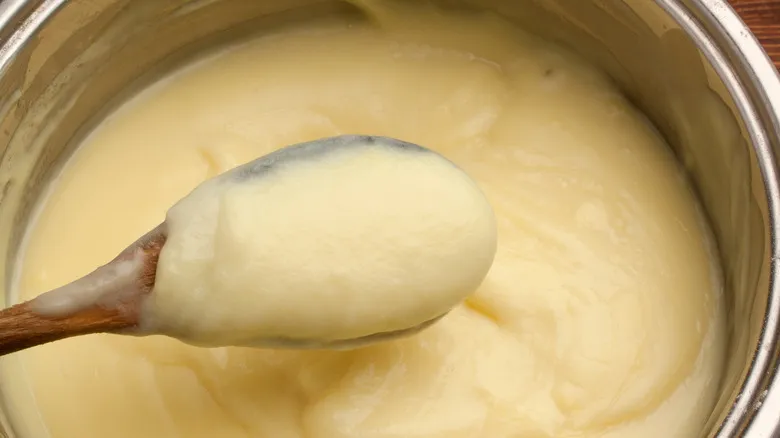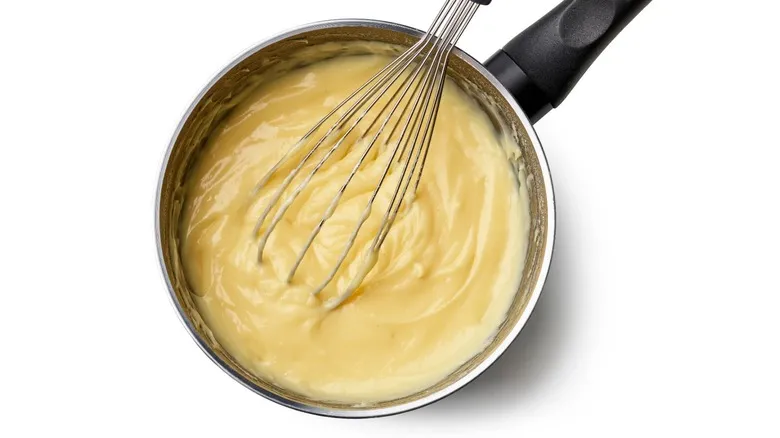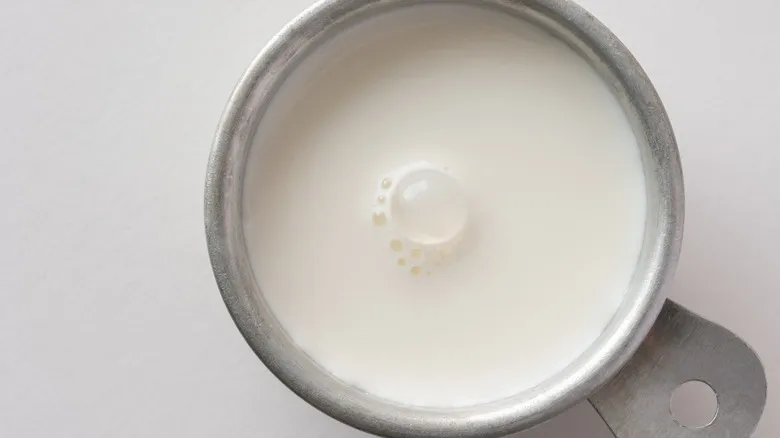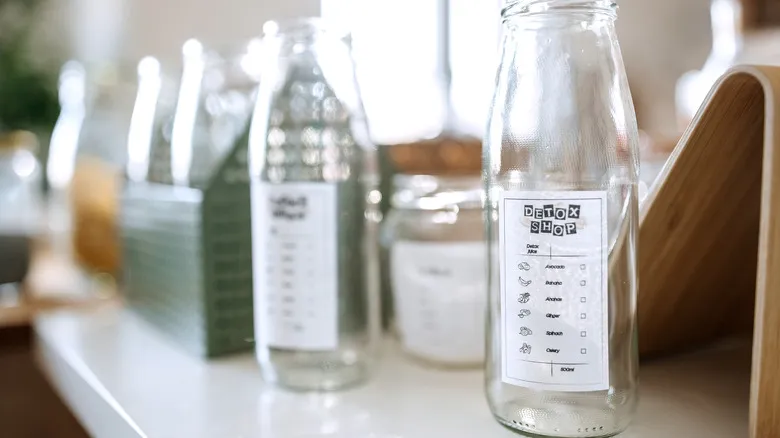The science of syneresis

Syneresis refers to the process where liquid separates and escapes from food. Custard contains a significant amount of water due to the inclusion of whole milk. When custard is prepared correctly, the egg proteins organize themselves into a microscopic structure that can trap and retain water molecules, resulting in its characteristic smooth, gel-like texture.
However, you can think of this structure as a house of cards. If any major alterations occur to the custard, this structure can collapse, leading to the proteins losing their ability to retain water, which causes the separation of proteins and water. This typically occurs due to drastic temperature fluctuations, such as cooking the custard at too high a temperature or chilling it too much.
When custard is overcooked, the egg proteins tend to clump together, effectively "squeezing" out the water trapped between them. This is why a failed custard will appear runny in the pot. Freezing custard leads to the formation of ice crystals among the egg proteins, disrupting the molecular bonds. Upon thawing, the proteins, now with large gaps between them, cannot interlock as they did before, allowing water to leak through these openings, resulting in separation.
How do you rescue a batch of split custard?

If you've already mixed a split, watery custard from the freezer into a pie or another dessert, it’s probably too late to salvage. In such situations, it’s best to consider it a learning opportunity and start anew. However, if your custard is still separate and hasn’t been incorporated into a recipe yet, there’s still a chance! The solution is straightforward: reheat the egg proteins so they can regain their water-absorbing structure, and they should be good to use again.
Start by pouring the split custard, including the liquid, into a saucepan and set it over low heat. Stir it frequently, about every 30 seconds, to avoid burning. As the custard warms up, gradually increase the heat and continue stirring for about 2 minutes. Then, for every 7 ounces of custard, add a tablespoon of warm whole milk to the saucepan. This additional milk will assist the proteins in realigning and binding the liquids together once more. Keep whisking, and you’ll soon notice the custard returning to its original smooth, gel-like texture.
Remove it from the heat before it reaches a boil (or it will separate again!) and use it to fill whatever pastry you have in mind. And of course, next time, remember to store it in the refrigerator.
Recommended

Top Your Baked Potato With A Hot Dog For A Bonfire Night-Inspired Meal

The Closest Substitution For Heavy Cream In Cooking And Baking

Baking Soda Can Remove Labels From Glassware Without A Trace

This Is The Best Place To Proof Bread In Your Kitchen
Next up

